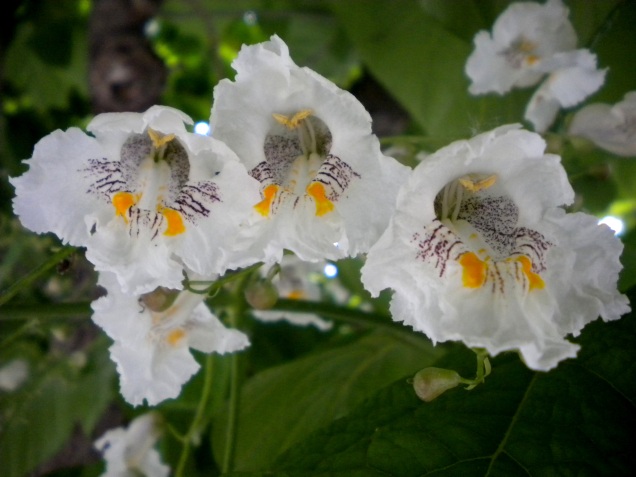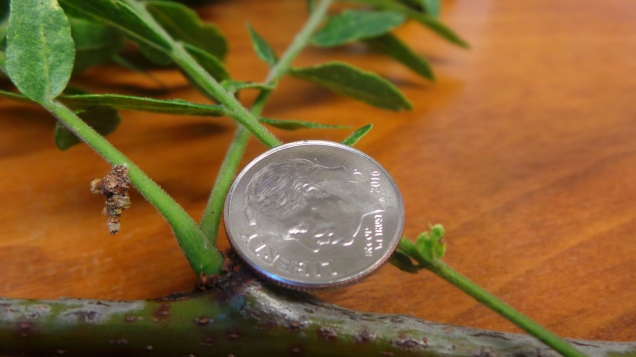
This is a fascinating time of year, and a fascinating year in general if your are an Extension Educator. The weird spring weather (remembers those 80+ degree March days, and that the sun never shone in April?) has resulted in a bumper crop of fungal diseases and strange timing for other pests.
Phenology is the use of plant life-cycle stages as indicators for various life cycle stages of pests and disease in order to apply the most effective and efficient controls. For example, when the catalpa is blooming, bagworms are crawling and extremely susceptible to chemical controls. And when the black locusts are in full bloom – this is the time the emerald ash borers are emerging from their in-trunk shelters and exposed and can be controlled.
The catalpas were in full bloom this week, before the gusty thunderstorms knocked the flowers off the trees today and so I knew to start looking for the tiny stages of bagworm. Now most folks are familiar with bagworms in their full-size stage. They are quite frequently found on conifers, seeming to prefer arborvitaes nearly as much as deer do. However, they have a host plant list as long as my arm and can even be found stuck to any number of inanimate objects such as dumpsters and garage siding.

I was called out to a site this week to take a look at some sickly honeylocust. Now there were a few different types of pests on these well-established roadside trees, and the bagworms weren’t causing the damage I was looking at (Check out this Penn State Fact Sheet on Honeylocust Plant Bug for more information). But upon closer inspection I noticed the tiny larval stages of bagworm creeping around what leaves were left on these trees. These tiny creatures look like the debris on any tree and blend right in (nature is amazing!) easily missed.

Are you wondering just how small that is?

If you watch these tiny insects closely you will see a small dark brown to black larva (caterpillar) emerge and feed on the leaves as they move around with the tiny beginnings of their new homes on their back.
Consistent monitoring is key for catching small problems before they turn into large ones. Knowing what else is happening in nature when the insects are small and hard to see will help you manage your pest populations.
